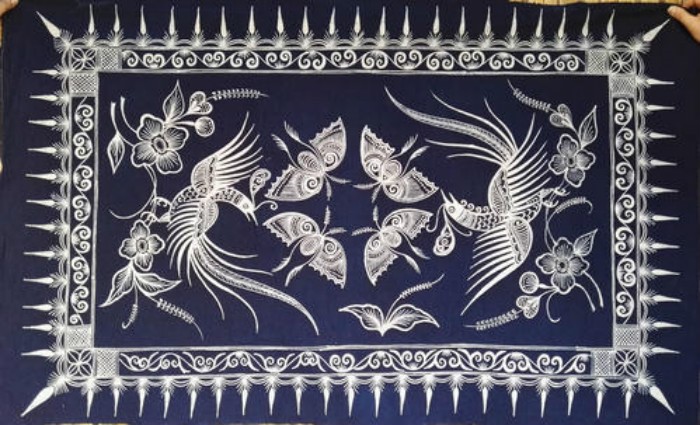Batik, one of the three handicraft methods in ancient China, by preventing the dye from reaching certain parts of the fabric after the dyeing process is completed, the fabric is allowed to dry completely, then the fabric is washed with hot water, the wax is dissolved, the finished product is a piece of cloth with patterns, designs, pictures, etc., dyed in contrasting colors, or background colors.

In general, although those who elaborate on the subject tend to do so in a more subtle way than is reasonable, the methods of producing multi-coloured textiles by one or more dyeing processes fall into two broad categories: mechanical and chemical. These three handicraft methods in ancient China all belong to the former category.
Mechanical part dyeing method is essentially for body blocking, in some cases, the only hinder or reduce, to access the target area of fabric dye, and chemical method is to use chemical temporarily present a insoluble soluble dye, can absorb the goal of the part of the fabric, where once dry absorption dyes in this part of the fabric will be returned to the state of insoluble, so when a whole piece of fabric dye in a different color of dyes, insoluble dye can prevent the dye is absorbed by the fiber in the fabric of a part of the insoluble dyes are absorbed.
Naturally, these color patterns can create multiple different shades of one dye more than once, using the same or different dye colors, more hot wax in the target area (not necessarily the same area of the dyeing process) will retain the existing color, while other fabrics are affected by the dyeing process.
Applying color through the batik method, if not an art, at least the process requires a high degree of skill, especially since hot wax must be applied in small amounts, quickly — otherwise the wax cools rather than will absorb the fiber fabric correctly, often subtly, otherwise the outline of the image will lack clarity. The nature of the design or image determines the type of spatula used: either wide or thin.
Leave a Reply